Mobile homes
With their soft bodies and lack of wings, insect larvae are the number one food item for countless other animals. The only thing that keeps the predatory hordes at bay is the amazing defensive adaptations these immature insects have evolved. For example, the toxin-laden tissues of various plants intended to keep herbivores away are greedily scoffed by certain insect larvae who use the unpleasant compounds to defend themselves from their own enemies. Other insects complete their entire larval development safe inside the trunk or branch of a tree laboriously munching wood to extract what nutrients they can (see previous post). More constructive species, such as the caddis-fly larvae and case-bearing moth caterpillars construct themselves minute mobile homes from small stones and fragments of wood and leaves.
It is among these constructive insect larvae our next animals belong. Cryptocephalus beetles are a very odd bunch of leaf-beetles (Chrysomelidae) that spend their time as a larva scuttling amongst the leaf litter carrying their own portable, flask-shaped shelter, lovingly fashioned from their very own cack. Just how these beetle larvae come to have their own mobile den of dirt begins when they are little more than zygotes. The maternal instincts of the female Cryptocephalus beetle extend to coating each of the eggs she lays with a diligently arranged layer of faecal plates:
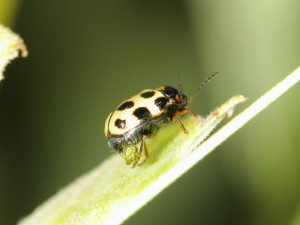
Cryptocephalus parvulus egg laying from Ross Piper on Vimeo.


When the excrement egg capsule is finished the female flicks it into the leaf litter and a few days later the larva hatches, cuts a hole in the end of its egg case and pops it head and strong legs into the outside world. Its soft, vulnerable abdomen is tucked safely inside the case, held in a loose ‘C’ shape and with no further hesitation the larva, little bigger than the head of a pin, scuttles off with its malodorous mobile home held aloft. This may seem like a bit of a burden for the tiny larva, but at the slightest sign of danger, the larva withdraws its head and legs into the case in the blink of an eye, leaving the hole of the case, plugged with its dark, tough head capsule. In this way, the case affords the larva a degree of protection from the numerous predators that stalk the leaf litter.
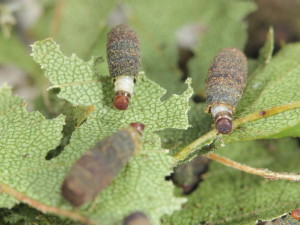
As the Cryptocephalus larva grows, so must its mobile home and to do this the young beetle uses its own filth, generated from the copious consumption of leaf litter and other detritus. The larva splits its case along the underside and then fills the gap with liberally produced faeces manipulated with its mandibles. To round the expansion off, the larva adds more faeces to the mouth of its case and then has a well-earned rest while its handiwork dries and hardens.
The case is enlarged three or four times in this way until the larva is ready to pupate. When it’s ready for the rigours of this transformation, the larva it seals itself inside its mobile home, turns around and pupates. After a couple of weeks, the beetle hatches and goes about chewing a perfect lid in the little flask of faeces that will serve as a doorway into its brief life as an adult.

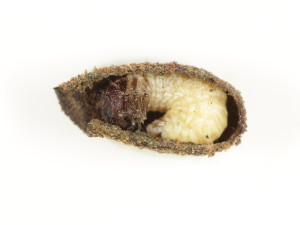
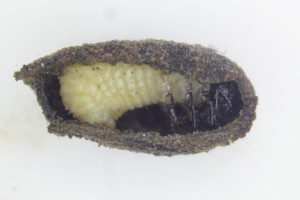
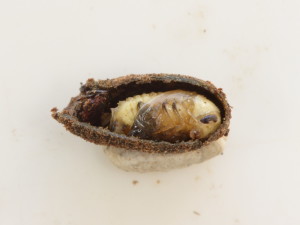
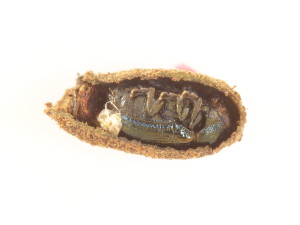

As interesting as these Cryptocephalus larvae are it is very unlikely you will ever see one because they hide amongst the soil and leaf litter. Here, safely concealed in their cases they look for all intents and purposes like something that comes out of the back end of a small rodent. It is possible they are mimicking small mammal droppings as these aren’t considered to be a delicacy in the animal world. Anyway, it is the pleasing, often colourful adults you are more likely to come across (see below for photos of the species you can find in the UK), but even then, many of them are very rare indeed and often occur in such small numbers that finding them is more luck than judgement. Here’s some more information on the Cryptocephalus species that are rarely encountered in the UK (PDF – PhD thesis, Chapter 3). Some species, such as C. decemmaculatus (see photos below), are only known from a single site in England.



Cryptocephalus beetles are exceptionally diverse with at least 1500 species worldwide making this genus one of the largest on the planet. Just why they are so diverse is something of mystery. They are very fussy when it comes to their habitat preferences and their long-distance flying ability isn’t much to shout about (see this PDF), factors that conspire to leave them at the mercy of reproductive isolation that in the long-term drives speciation.
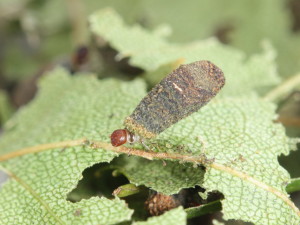
Leave a Reply